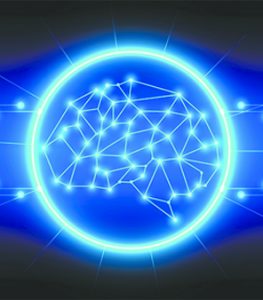 People with neurological conditions like Parkinson’s disease, essential tremor, epilepsy, Tourette’s syndrome, dystonia, obsessive-compulsive disorder and even certain chronic pain syndromes can suffer from constant, involuntary and uncontrollable movements, including shaking, twisting, clenching, jerking and other reactions that can make normal activities difficult or impossible. When medication proves insufficient to subdue symptoms to the point where a reasonable quality of life is achieved, there is a potentially effective surgical treatment called deep brain stimulation.
People with neurological conditions like Parkinson’s disease, essential tremor, epilepsy, Tourette’s syndrome, dystonia, obsessive-compulsive disorder and even certain chronic pain syndromes can suffer from constant, involuntary and uncontrollable movements, including shaking, twisting, clenching, jerking and other reactions that can make normal activities difficult or impossible. When medication proves insufficient to subdue symptoms to the point where a reasonable quality of life is achieved, there is a potentially effective surgical treatment called deep brain stimulation.
In general terms, deep brain stimulation works somewhat like a pacemaker works to keep the heart pumping at a more normal pace – the differences being that the electrodes are implanted within the brain and the patient can control when and how much stimulation may be needed.
Patients considering this surgery first undergo specific medical tests to help determine if this surgery is a safe and potentially effective choice for their particular situation. If a patient is established to be a candidate, a radiology technologist will perform an MRI to create detailed images of the brain, so that ONC neurosurgeon Dr. Daniel Robertson can determine optimal placement of the electrodes.
Board Certified in Neurological Surgery by the American Board of Neurological Surgeons and on staff at Munroe Regional Medical Center & Ocala Regional Medical Center, Dr. Robertson has been in the practice of neurosurgery since 1994, and has performed various treatments for movement disorders. “While deep brain stimulation isn’t for every patient and, as with all brain surgeries is not without risk, it can be of
tremendous help to those whose movement disorders are unmanageable through other means like medication,” says Dr. Robertson.
First, a local anesthetic is used to numb the scalp. The brain itself has no pain receptors, so general anesthesia isn’t necessary in most cases. Using a map of the patient’s brain, Dr. Robertson creates small entry points in the skull and places electrodes in the indicated areas. These electrodes lead to a battery-operated neuro-stimulator Dr. Robertson places under the skin below the collarbone in the chest. The function of the electrodes is to regulate and help normalize electrical impulses and/or chemical reactions within the brain. Dr. Robertson helps to ensure proper placement of the electrodes by talking to the patient during the procedure and through careful monitoring of his or her responses to stimulation.
Placement of the neuro-stimulator requires general anesthesia, so it is sometimes performed during a separate surgical session.
A few weeks after surgery, once the brain has had a chance to heal, the stimulator is turned on and progress is carefully observed to determine the optimal settings with the fewest side effects. Through testing and any needed adjustments, the stimulator is programmed to deliver electrical signals to the brain to help stabilize its messages to the body and reduce involuntary movements. The patient can control the strength and frequency of the signals the stimulator sends, and turn the device on and off via a remote control device.
While deep brain stimulation can’t rid patients of their conditions, it does provide considerable relief to many, and can help some people quit or reduce their medications. Because of the risk and potential for unwanted side effects, however, deep brain stimulation should be considered a last course of action in treating movement disorders.
“When less aggressive methods fail to provide adequate relief, deep brain stimulation can help reduce involuntary tremors and spasms in patients whose conditions make normal living difficult or impossible,” says Dr. Robertson. “It isn’t for every patient, but those whose movement disorders cause them
significant problems should explore their options with their doctor, or call us at ONC to find out more about the possible risks and benefits of this procedure.”
DANIEL P. ROBERTSON, MD
• In the practice of neurosurgery since 1994. Joined Ocala Neurosurgery Center in 2004
• Board Certified in Neurological Surgery by the American Board of Neurological Surgeons
• Bachelor of Engineering Degree from Duke University
• Medical Degree from the University of Tennessee
• Residency in neurosurgery at Baylor College of Medicine in Houston, Texas
• Member, Alpha Omega Alpha Honor Medical Society
• Fellow, the American College of Surgeons
• Certified by the National Board of Medical Examiners
• On staff at Munroe Regional Medical Center & Ocala Regional Medical Center
Dr. Robertson is a member of the American Association of Neurological Surgeons, the Congress of Neurological Surgeons and the Marion County Medical Society.
Dr. Daniel Robertson, his partner neurosurgeons, Dr. Mark Oliver and Dr. Antonio DiSclafani, and their talented support team are dedicated to providing unsurpassed diagnostic and therapeutic care for a range of neurological and spinal disorders. Our foremost mission is to help you return to a life of health, comfort and vitality.
Check Also
CUSTOMIZABLE LIGHT ADJUSTABLE LENS A GAMECHANGER FOR CATARACTS PATIENTS
All Americans have some degree of cataract change by the age of 75. As the …
 Central Florida Health and Wellness Magazine Health and Wellness Articles of the Villages
Central Florida Health and Wellness Magazine Health and Wellness Articles of the Villages



